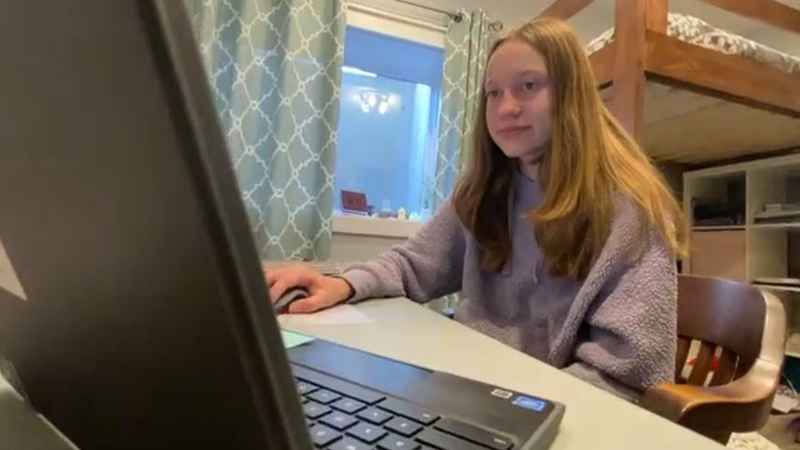Distance learning lessons: Looking beyond the letter grade
[anvplayer video=”5001491″ station=”998122″]
Perhaps the impacts of distance learning are not as bad as once thought.
To be clear, the numbers are not good.
A report before many students began their winter break — during which they would spend most of their time in the same place they’ve been going to class, their home — highlighted an increase in failing grades.
It shows across the nation the number of students with at least one failing grade has increased as much as 40%.
To get a better understanding of what those numbers, or failing grades, mean and what the impacts could be, KSTP went to the source: a local high school teacher who has been teaching from a distance for the majority of the pandemic.

[KSTP]
“Well, to say it’s been difficult is obviously an understatement,” said Robyn Asher, or as her students call her, Ms. Asher.
Asher teaches life science at Como Park High School, part of St. Paul Public Schools. That difficultly stretches beyond the curriculum – she misses her students.
“It’s been kind of been like mentally shattering for teachers not to be in this classroom, not to have kids sitting in here with us, and not to be interacting like that,” Asher said while in her empty classroom. “It’s been terrible.”
She admits that grades are not where she’d like them, but she says there’s more to this year than a passing grade. In fact, she says students should not be judged on how they perform this year as the challenges have been what she calls "humongous."
Some of those challenges are happening inside Amy Anderson’s family home in North St. Paul. Mom says she has learners in all levels of school: elementary, middle, high school and college.
Amy tells 5 EYEWITNESS NEWS one of the biggest difficulties for her children has been adjusting to the new learning styles and managing it all. But while her kids are facing new obstacles in order to succeed, Amy says they’re developing more grit and life experiences.
That grit and maturity is something Asher knows her students are developing, too.
One example she shared is when one of her students who never had the video on during virtual lessons, just the audio, was falling behind.
Asher asked her to stay logged on after class and asked if everything was OK. The student turned on her video and Asher saw her student sitting with two younger siblings and learned her student was also in charge of caring for them and helping with their own distance learning.
“My heart went out to [the student],” Asher said.
She does not have a plan on how to deal with the learning gap that’s getting created by distance learning, and Minnesota school leaders may not have that plan yet, either. But she does know it must be created delicately and must look into everything the students are going through.
As we know, what’s learned this year will be different from years past, just like so many other things in our lives.